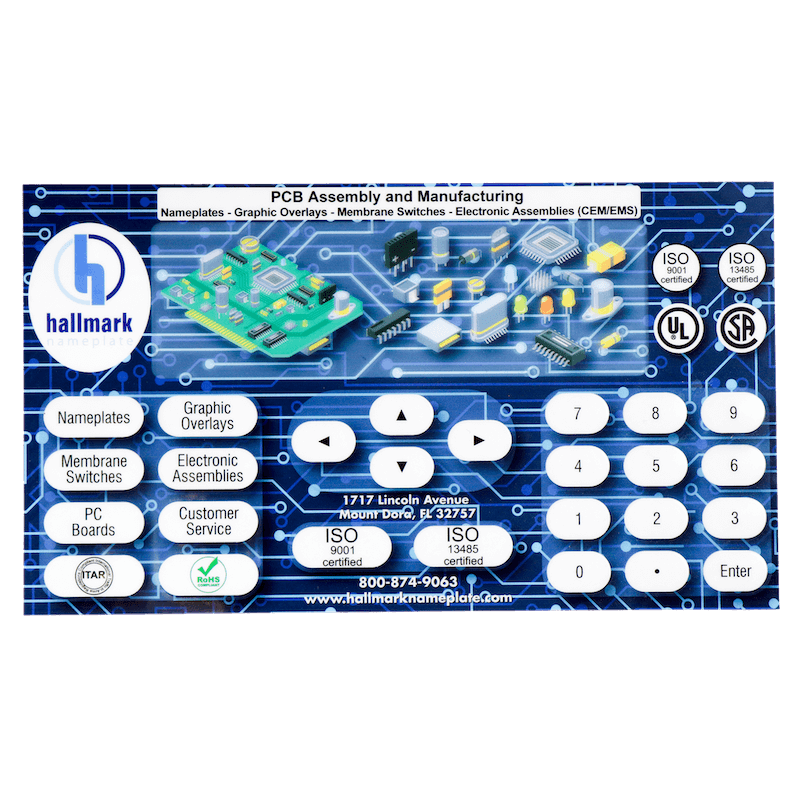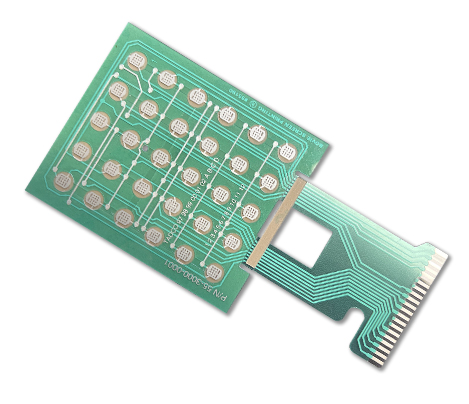Discover How Membrane Switches Feature and Their Duty in Modern Electronic Devices
Membrane Switches represent an innovative integration of modern technology and style within the world of contemporary electronic devices, acting as necessary user interfaces in many devices. Consisted of several layers, these switches use pressure-sensitive systems to assist in individual interaction. Their applications span numerous sectors, from consumer electronic devices to medical equipment, highlighting their flexibility and importance. Comprehending the ins and outs of Membrane button functionality and their broader effects in improving individual experience invites more expedition into their style, benefits, and the innovative developments forming their future in modern technology.
What Are Membrane Buttons?

Membrane buttons are distinguished by their durability and resistance to ecological aspects, such as dirt, moisture, and severe temperature levels. They can be customized with various graphics, colors, and tactile comments options, boosting user experience while keeping aesthetic allure - membrane switches. The incorporation of published circuits allows for seamless combination right into gadgets, boosting total performance.
The versatility of Membrane switches is noticeable in their ability to sustain both easy and intricate control functions. They can integrate features such as LED indicators and touch-sensitive technology, accommodating specific user requirements. As innovation proceeds to evolve, Membrane Switches continue to be important for allowing reliable and intuitive interface, therefore playing a pivotal role in the innovation of contemporary electronic gadgets.
Elements of Membrane Buttons
Membrane buttons are made up of a number of crucial parts that function with each other to develop a functional and reputable interface. The key aspects consist of the visuals overlay, glue layer, spacer layer, and conductive traces.
The visuals overlay works as the customer interface, usually printed on a flexible substratum such as polyester or polycarbonate. This layer not just provides visual appeal however also consists of tactile comments, visual hints, and protective functions. Beneath the visuals overlay lies the sticky layer, which protects the button to the device and makes sure sturdiness against environmental anxieties.
The spacer layer is important for preserving the required gap between the visuals overlay and the circuit layer. This void allows for the activation of the button when pressure is used. The conductive traces, usually made from silver or carbon, create the electrical paths that complete the circuit when the switch is engaged.
In addition, a support layer might be included for structural support and insulation. These elements work together effortlessly, guaranteeing that Membrane switches are both resistant and user-friendly, making them indispensable in numerous contemporary digital applications.
How Membrane Switches Work
Exactly how do Membrane Switches feature efficiently within electronic devices? Membrane Switches operate the concepts of pressure-sensitive modern technology, using a split building that includes visuals overlays, adhesive layers, and conductive elements. When a user uses stress to the button, the leading layer warps, allowing the conductive components below to make get see page in touch with and finish an electric circuit. This action sets off the wanted function within the device.
The design of Membrane buttons is crucial for their efficient operation (membrane switches). The layers are carefully crafted to provide responsive her response responses, durability, and resistance to environmental elements such as moisture and dirt. The incorporation of domes-- little, elevated areas within the button-- enhances tactile reaction, supplying users with a recognizable click experience upon activation
Additionally, Membrane buttons can be personalized in regards to dimension, shape, and graphics, making them suitable for different applications. They are typically utilized in control panels, clinical gadgets, and customer electronics due to their sleek layout and reliability. On the whole, the reliable functioning of Membrane buttons is pivotal in boosting customer communication and making certain smooth operation in contemporary digital tools.

Applications in Modern Gadgets
Using their special design and functionality, Membrane buttons have actually become essential elements in a large range of contemporary digital devices. These flexible user interfaces are used in consumer electronic devices, commercial devices, clinical gadgets, and vehicle controls, offering seamless customer communication.
In consumer electronics, Membrane buttons are typically found in home appliances like microwaves, washing devices, and other family tools, where they make it possible for user-friendly control with a streamlined account. Their inconspicuous design facilitates combination right into small tools, improving visual appeal without endangering functionality.
In industrial applications, Membrane Switches act as control panels for visit this website machinery, supplying sturdiness and resistance to harsh settings. Their capability to endure moisture and pollutants makes them suitable for usage in manufacturing and handling sectors.
Medical gadgets additionally take advantage of Membrane switches, which are created to be very easy to tidy and preserve, guaranteeing health in clinical settings. They are usually utilized in diagnostic tools, individual tracking systems, and mobile medical devices, where dependability is critical.
Advantages of Membrane Switches
One of the essential benefits of Membrane switches is their adaptability, which allows them to be customized for a selection of applications across multiple industries. These buttons can be developed in numerous sizes and shapes, accommodating distinct product requirements while offering seamless assimilation into gadgets. Their slim profile allows a small and sleek style, typically improving the aesthetic appeal of electronic items.
One more substantial benefit is their longevity - membrane switches. Membrane buttons are generally immune to dust, moisture, and chemicals, making them ideal for harsh atmospheres. This durability prolongs their life-span compared to typical mechanical switches, reducing the requirement for frequent substitutes
Additionally, Membrane Switches offer cost-effectiveness. The production procedure entails printing technologies that reduce production prices, particularly for large runs. This affordability, combined with low upkeep needs, makes them an attractive choice for producers.

Verdict
In final thought, Membrane Switches stand for a considerable improvement in customer interface technology within modern-day electronic devices. As the need for resistant and instinctive interfaces proceeds to expand, the function of Membrane switches in forming customer experience will certainly increase.
Membrane Switches represent an advanced assimilation of innovation and style within the realm of modern electronics, serving as important user interfaces in many devices.In the world of modern electronic devices, Membrane Switches serve as important parts that facilitate customer interaction with gadgets. As modern technology proceeds to develop, Membrane Switches continue to be vital for allowing reliable and intuitive customer interfaces, thus playing an essential duty in the development of modern-day digital devices.
Exactly how do Membrane Switches feature efficiently within digital gadgets? Overall, the efficient functioning of Membrane switches is crucial in enhancing individual communication and guaranteeing seamless operation in modern electronic tools.